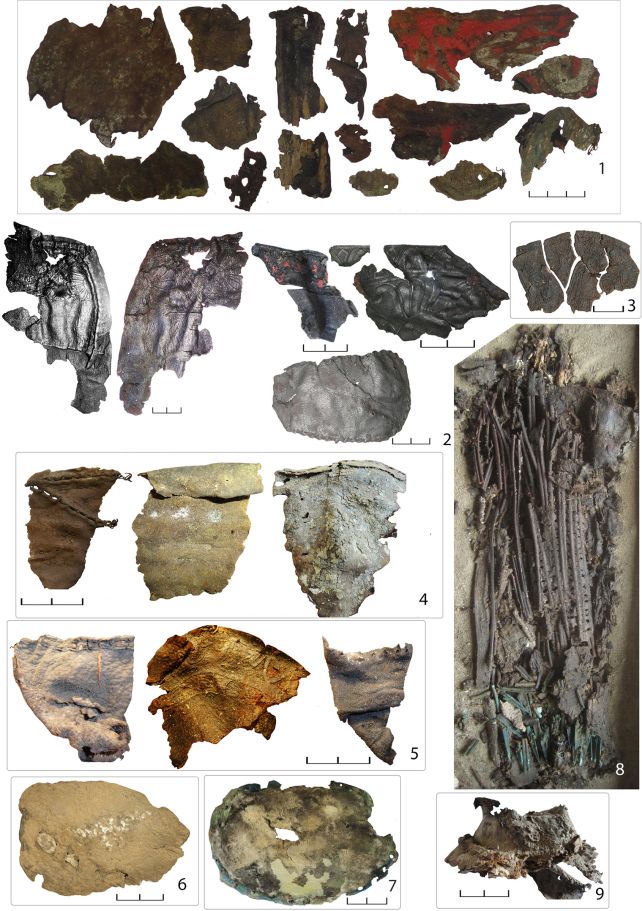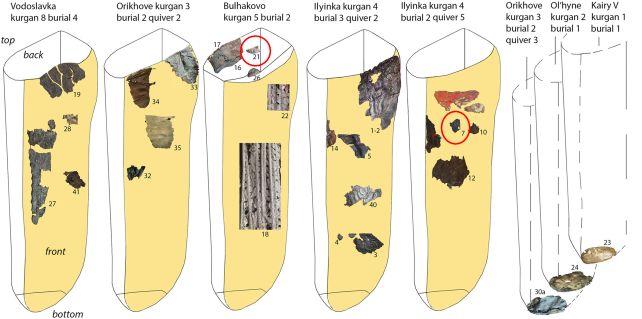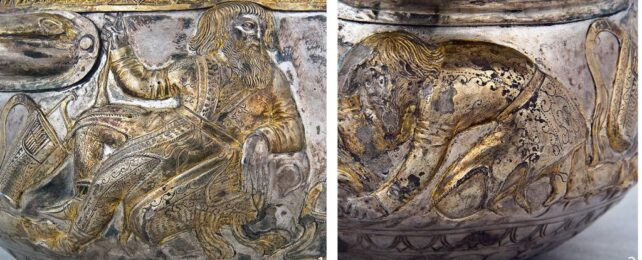The ferocious Scythians, according to the ancient Greek historian Herodotus, were a terrifying and bloodthirsty lot.
With an alacrity and level of detail that could be described as avid, he describes the treatment awaiting the conquered foes of the Scythian warriors – the many uses to which their slain corpses will be put.
Their hides, Herodotus says, will be tanned into leather, and fashioned into quivers to hold Scythian arrows, a final, devastating insult.
Herodotus has been accused of fanciful flights of fib-telling, but on this he appears to have been at least somewhat accurate. An analysis of scraps of leather obtained from Scythian burial sites across southern Ukraine has revealed that some of the samples from quivers are, indeed, of human origin.
"Our results demonstrate that Scythians primarily used domesticated species such as sheep, goat, cattle, and horse for the production of leather, while the furs were made of wild animals such as fox, squirrel and feline species," write a team of archaeologists led by Luise Ørsted Brandt of the University of Copenhagen.
"The surprise discovery is the presence of two human skin samples, which for the first time provide direct evidence of the ancient Greek historian Herodotus' claim that Scythians used the skin of their dead enemies to manufacture leather trophy items."

The Scythians are a somewhat mysterious people, but we know a few things about them. They were known for their warlike, nomadic lifestyle, ruling the Eurasian steppe between around 700 BCE and 300 BCE.
While this lifestyle isn't given to leaving behind, for example, stone cities, we do have an archaeological record of their artifacts, mostly the objects left behind in their elaborate burial mounds.
We also have the accounts of Herodotus, who lived during the 5th century BCE, right around the time the Scythian society was at its peak. Herodotus devoted an entire book to documenting the Scythians, including their history and customs. In one remarkable chapter, he describes how Scythian warriors decapitate their enemies, using the heads to prove their deeds to their kings.
Once this is done, though, the Scythian warrior strips the head of its scalp, and uses the leather as a hand towel that they hang from the bridle of their steed. The more hand towels a warrior has, the more status they are granted.
"Many Scythians even make garments to wear out of these scalps, sewing them together like coats of skin," Herodotus wrote.
"Many too take off the skin, nails and all, from their dead enemies' right hands, and make coverings for their quivers; the human skin was, as it turned out, thick and shining, the brightest and whitest skin of all, one might say. Many flay the skin from the whole body, too, and carry it about on horseback stretched on a wooden frame."
It does sound like the sort of gruesome rumor that might be fabricated in order to exaggerate barbarity. But an elaborate funeral mound seemed to concur with what appeared to be another far-fetched account by Herodotus of a Scythian king's funeral.
Ørsted Brandt and her team conducted their study on 45 scraps of leather excavated from 14 burial sites. In years past, scientists would have relied on an analysis of the grain of the leather, since DNA is destroyed during the process of tanning leather.
More recently, however, scientists have developed techniques for analyzing the proteins in leather, and using that information to identify the contributing species.
The researchers were able to determine which species provided most of their scraps of leather. Most, as already noted, were animals. It's not clear what the leather was used for in many cases. Some could have been boots or clothing. Quivers and arrow containers, however, were fairly easily recognized; and on two different quivers, human skin was found.

The entire quiver wasn't human skin. Mostly, the construction was made from the skins of several animals, with human leather forming part of the top part of the quiver. This suggests, the researchers say, that quivers were made by the individual from whatever leather they had available, perhaps putting the rarer skins on top.
Of course, the Scythians were more than the salacious reports of their violence. The researchers say they occupied the land between the settled communities of Europe and Asia and were instrumental in the transfer of languages, goods, technology, ideologies, and even diseases, between two separate worlds.
There's also evidence to suggest that some of the Scythians settled into a more Agrarian lifestyle. The leathers they crafted can tell us about the animals they raised and used, and the technologies they employed to do so. So, human leather is interesting – but so too is the animal leather, the researchers say.
"Our results help us to start looking at the economics of Scythian animal exploitation – not only for food, fiber, traction, and riding, but also for the most essential but rarely considered material – leather," they write in their paper.
"We also identified up to two quivers composed at least partially from human derived skin, supporting Herodotus' claim that certain parts of some Scythian quivers were actually made with human skin, perhaps from defeated foes."
The research has been published in PLOS One.
